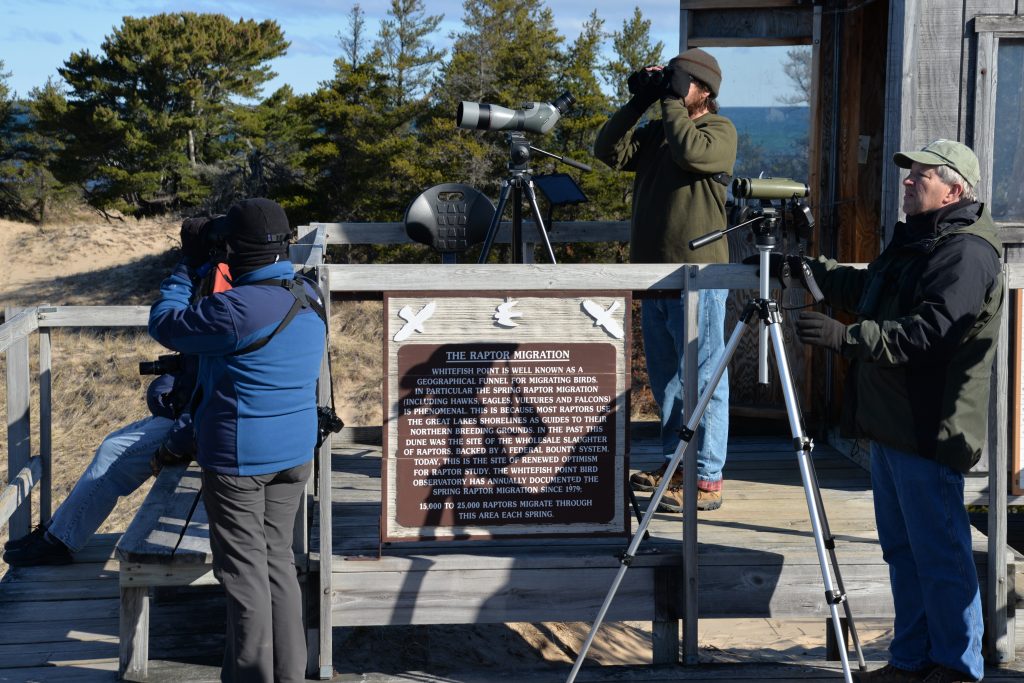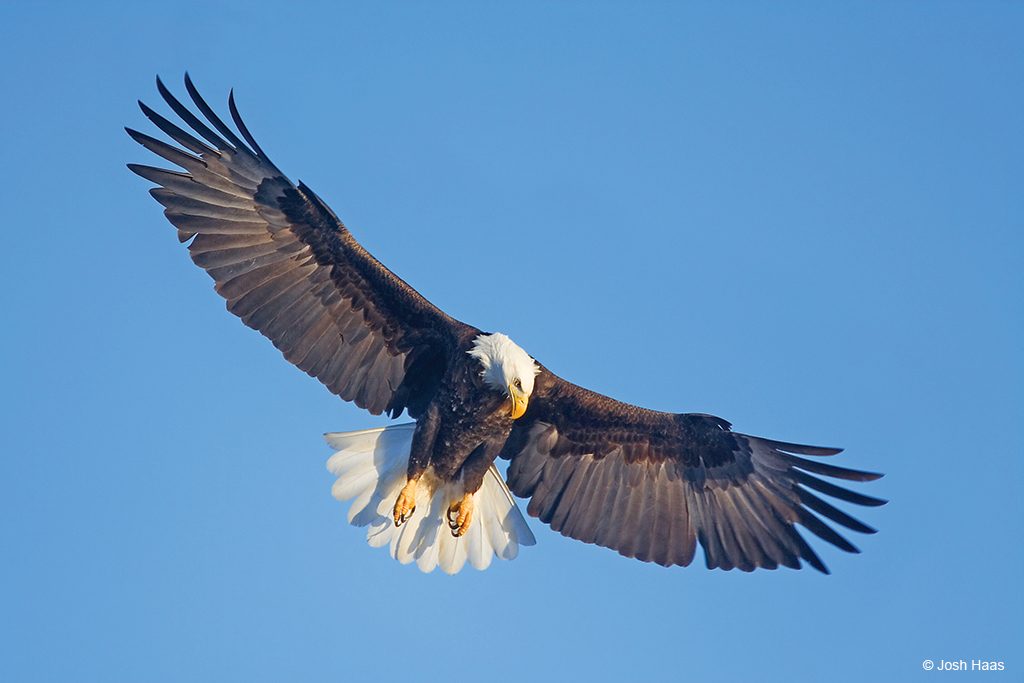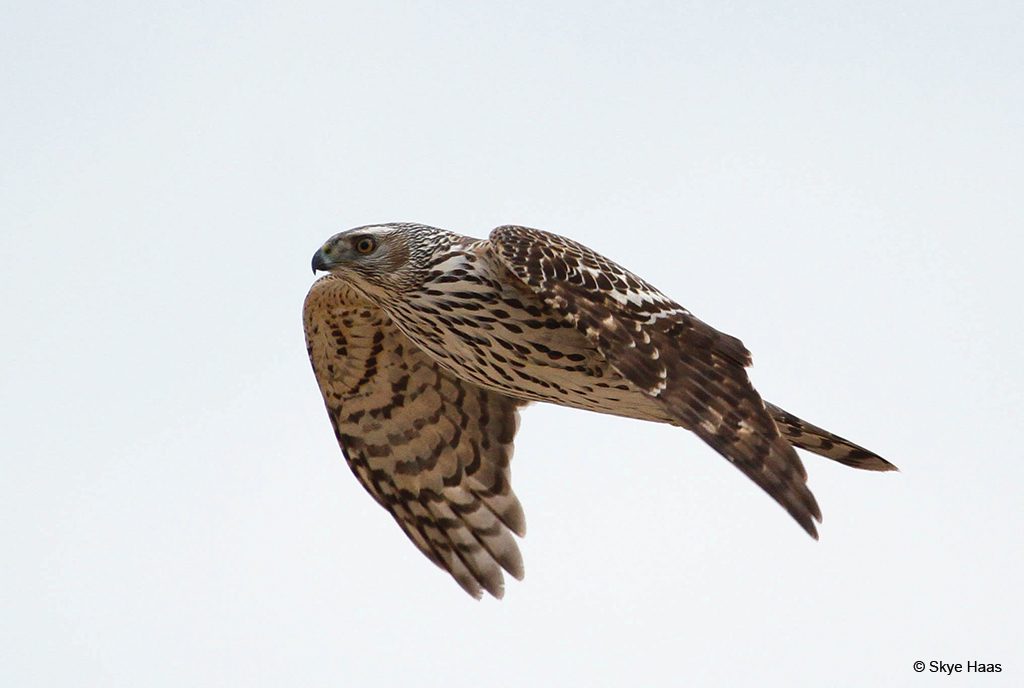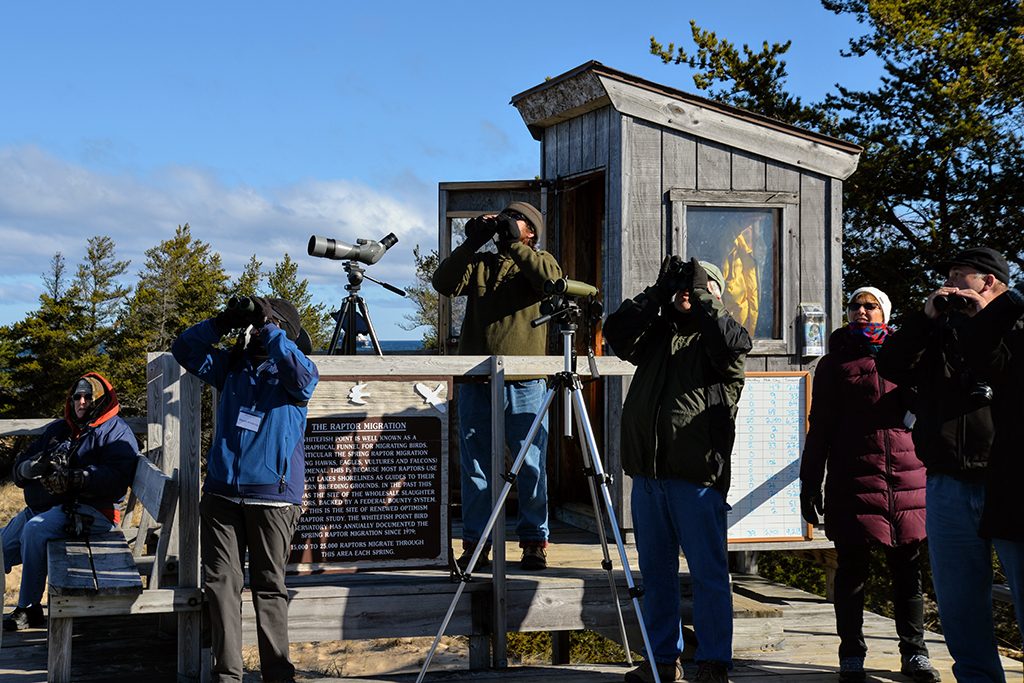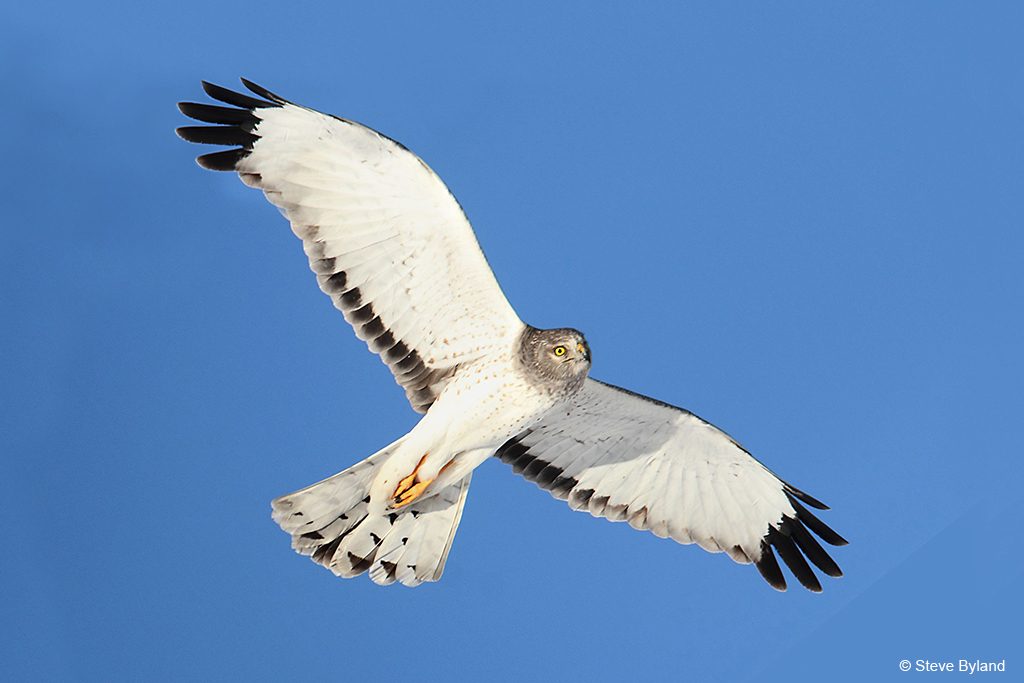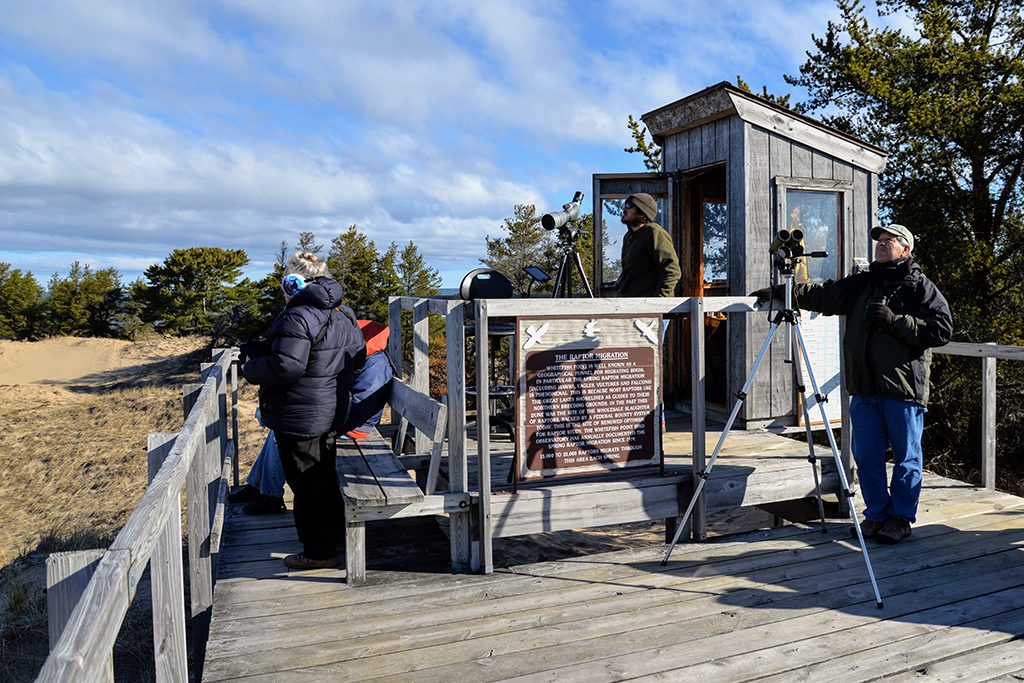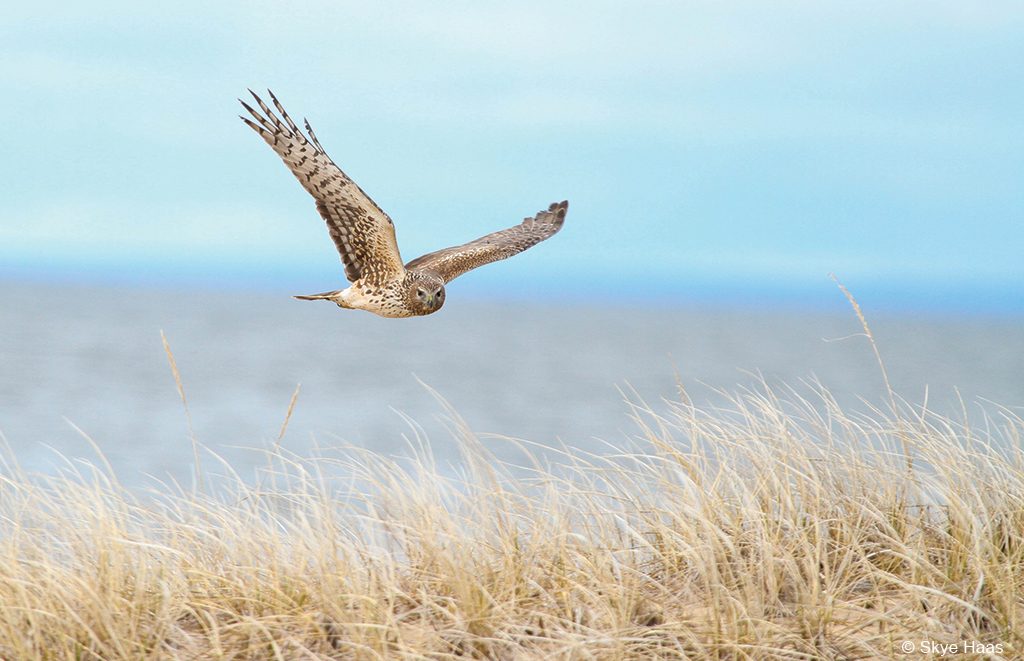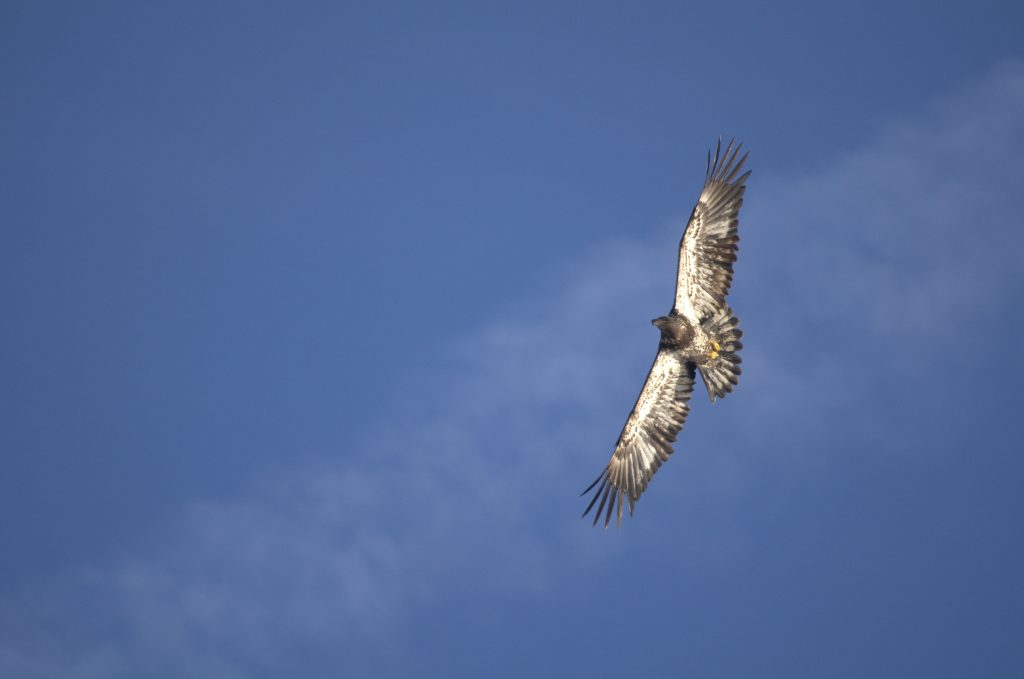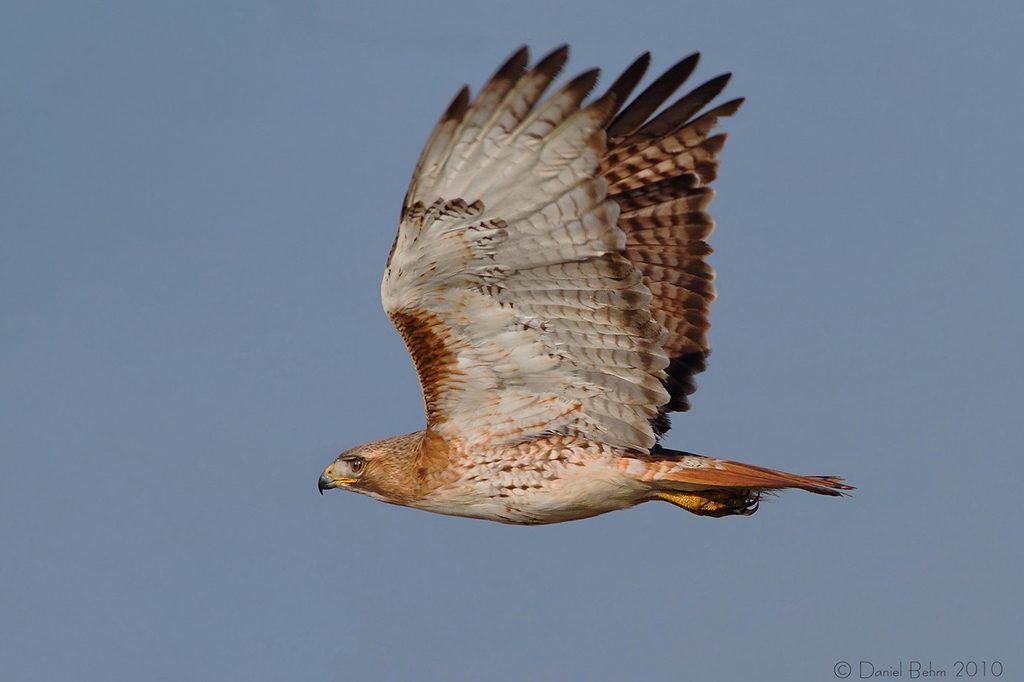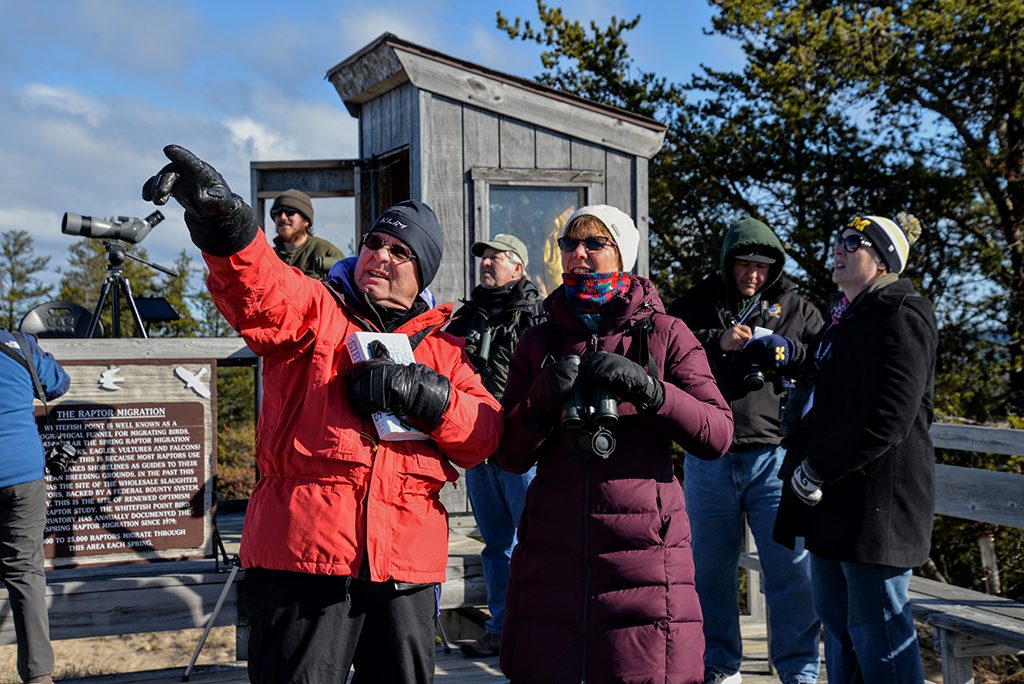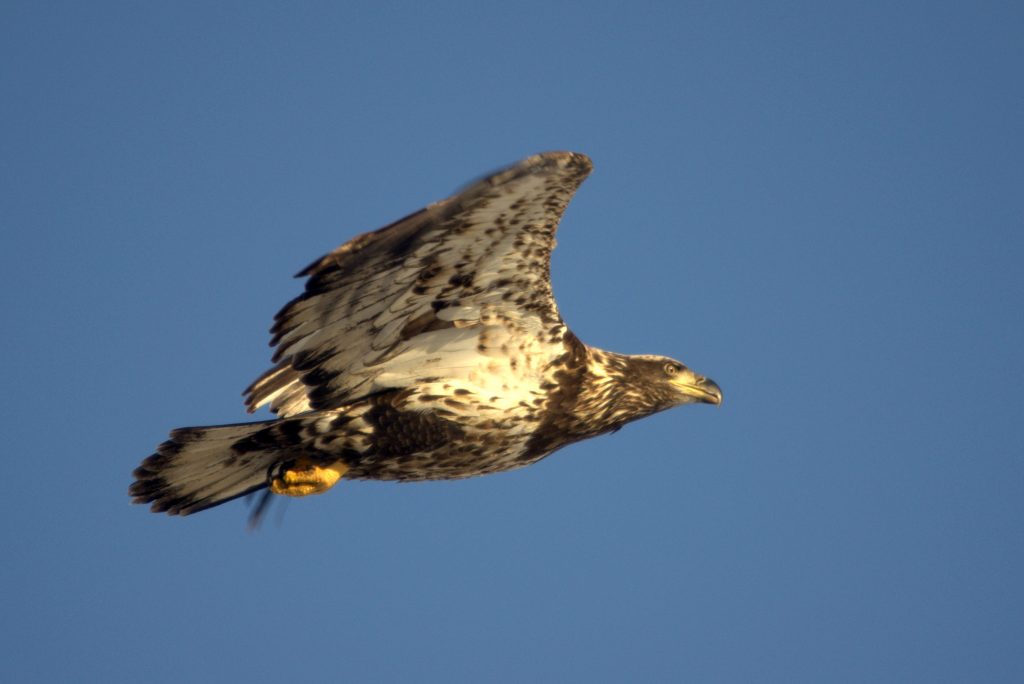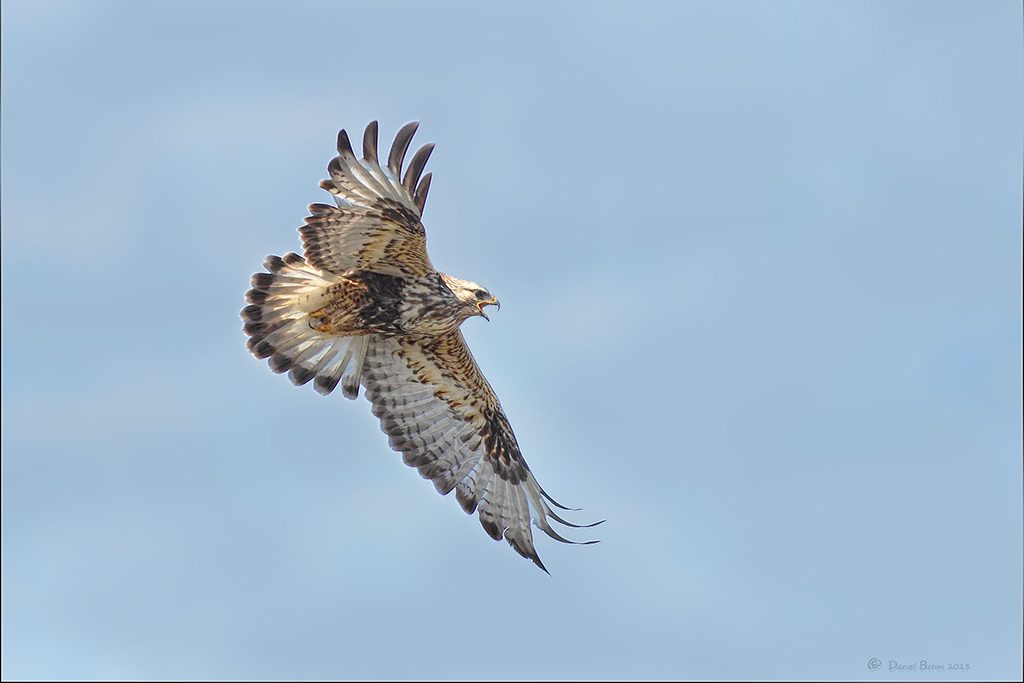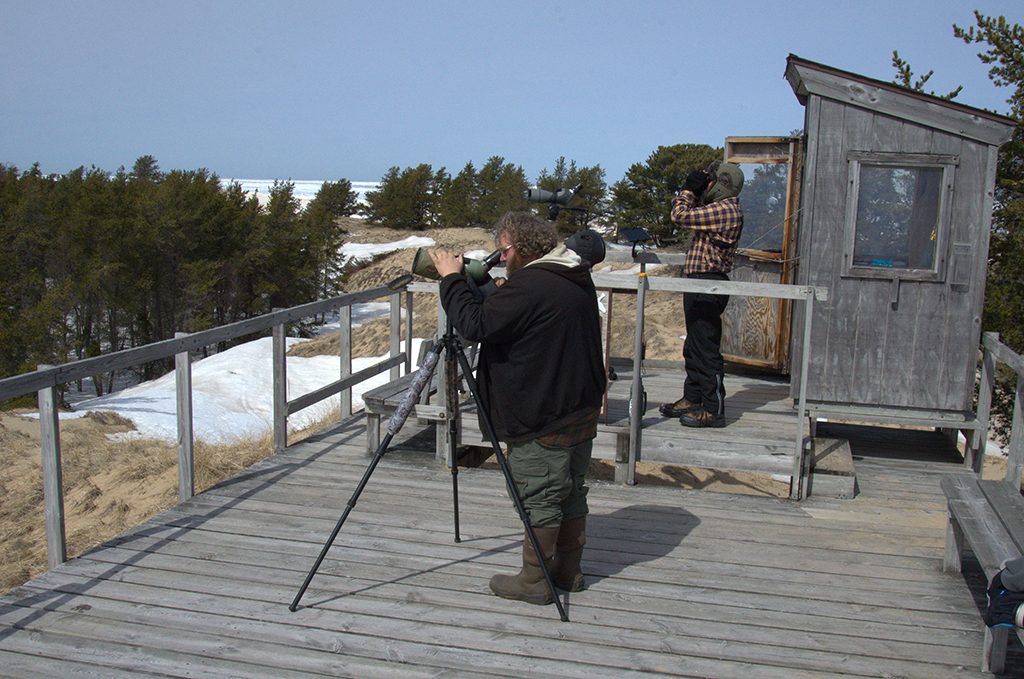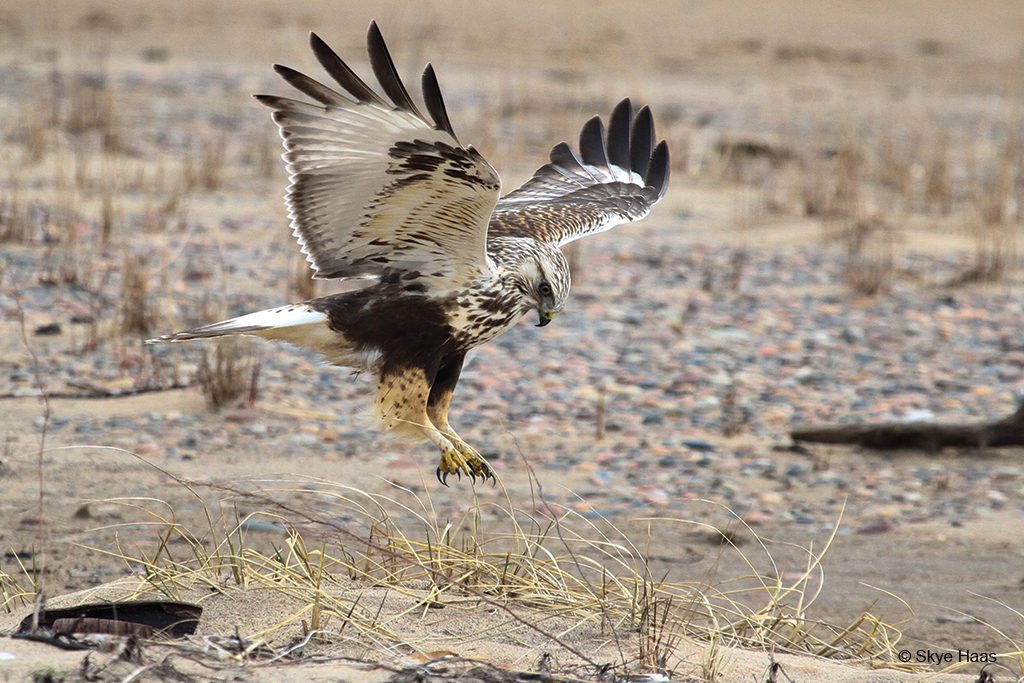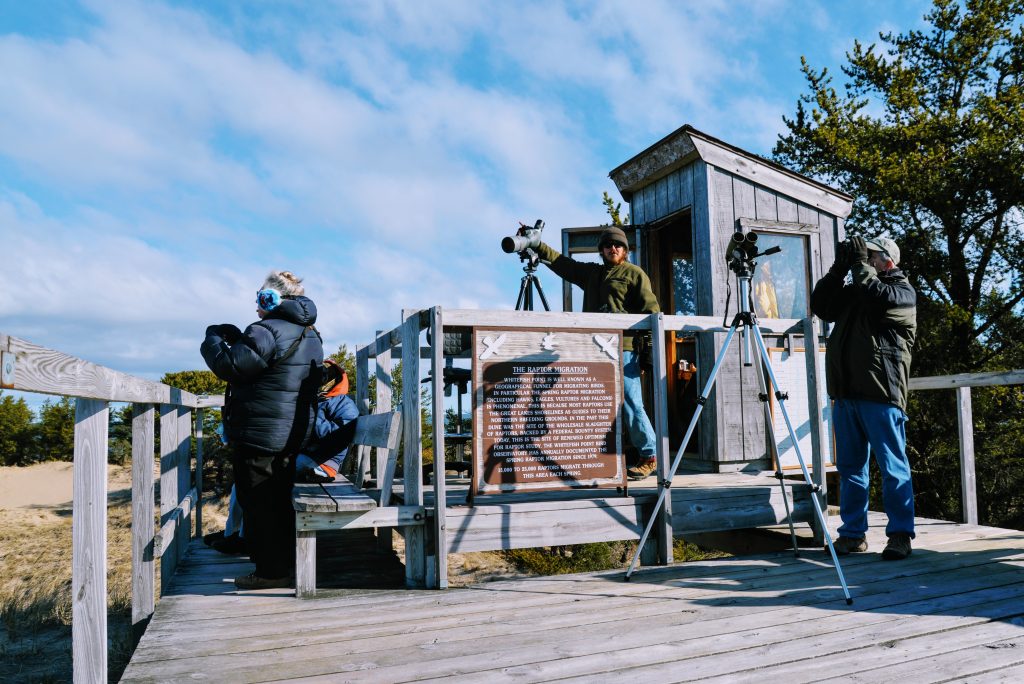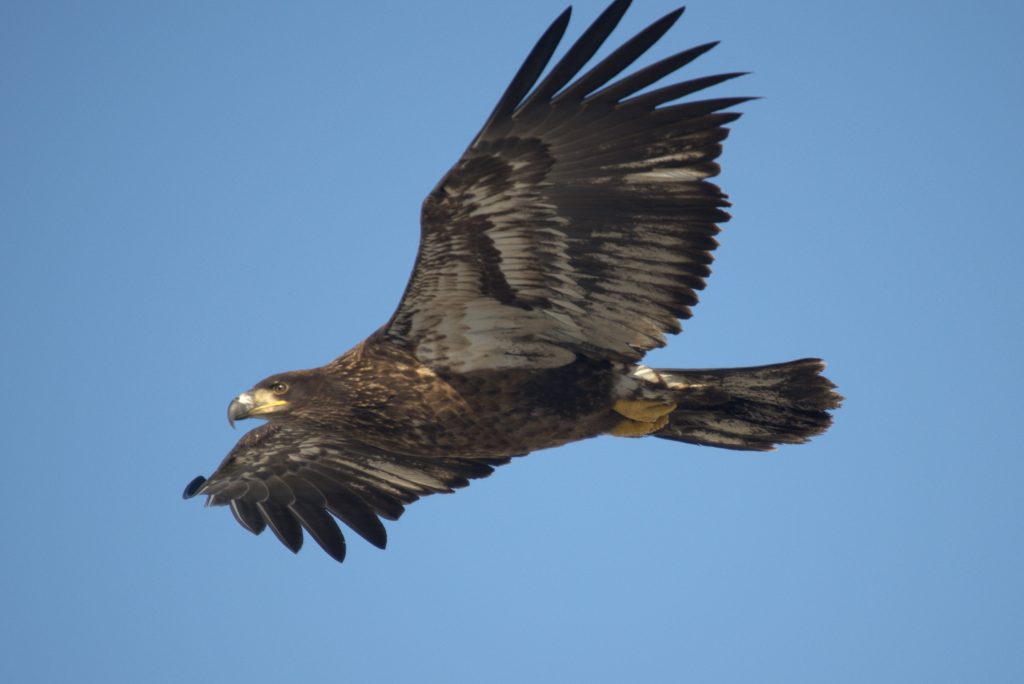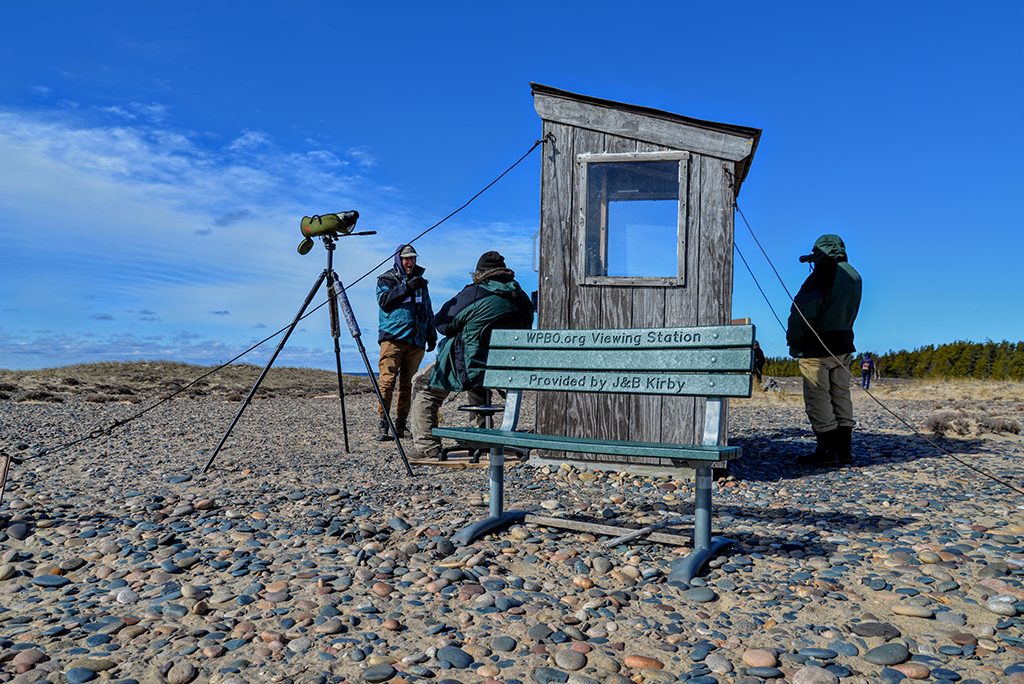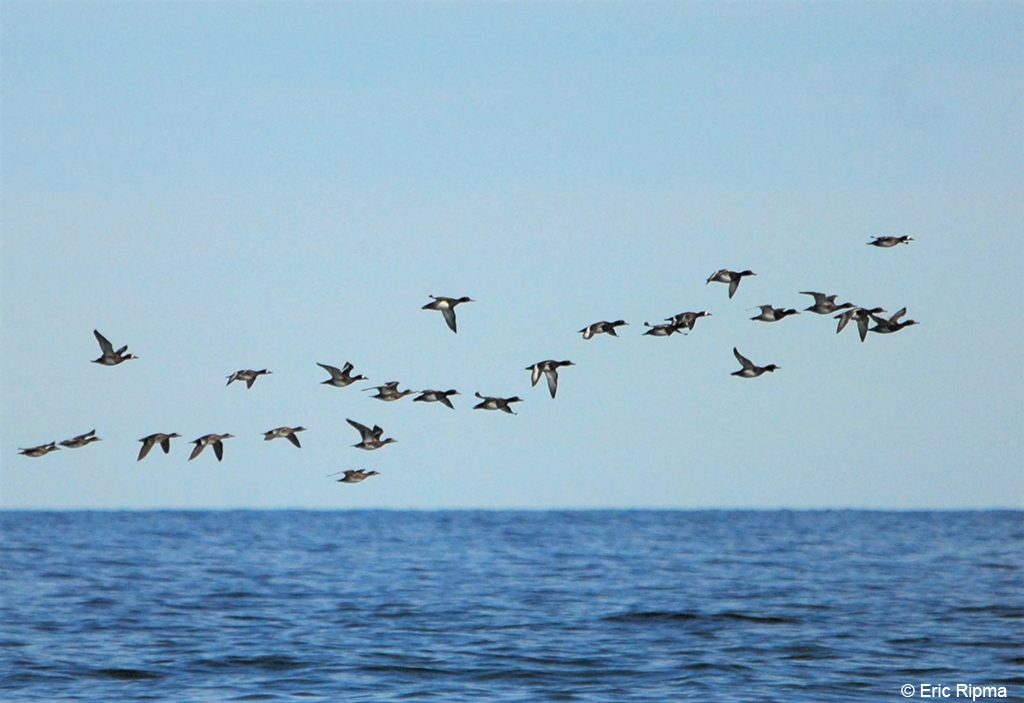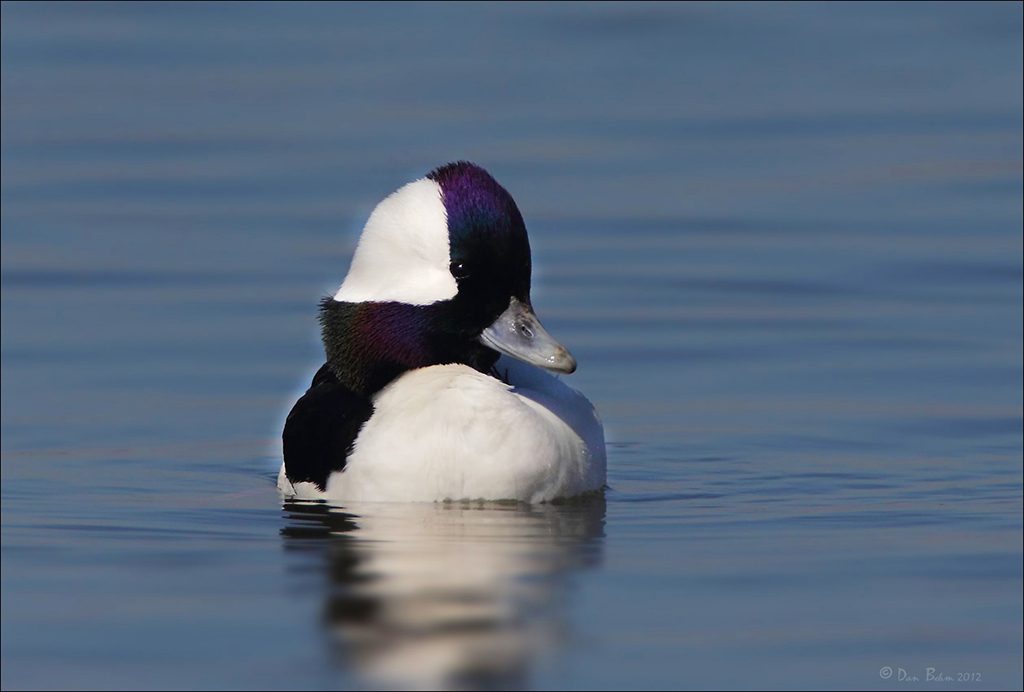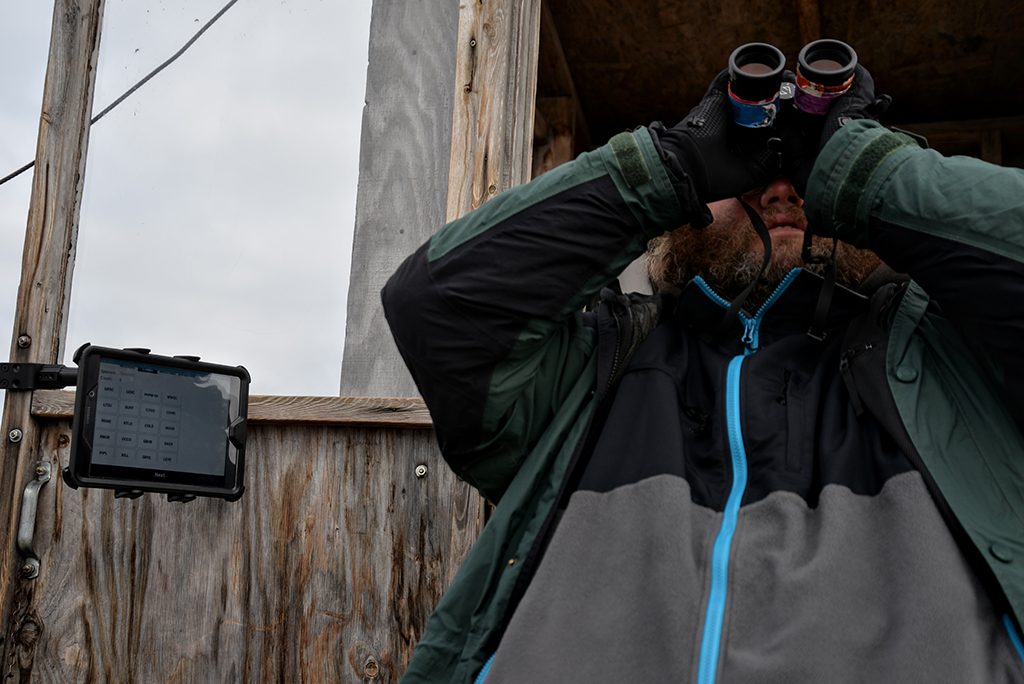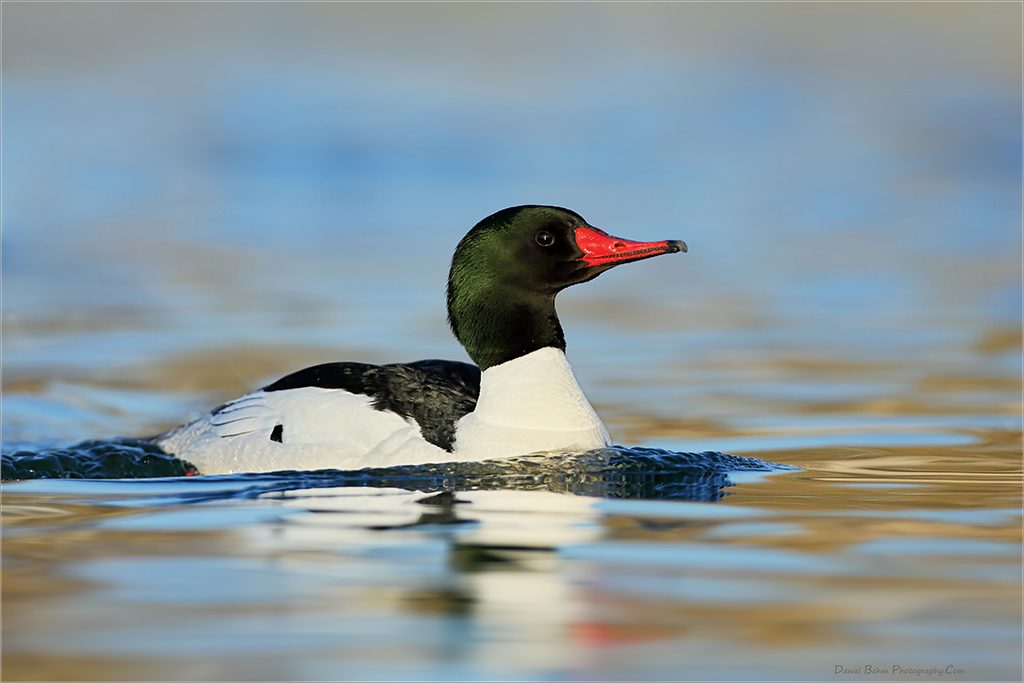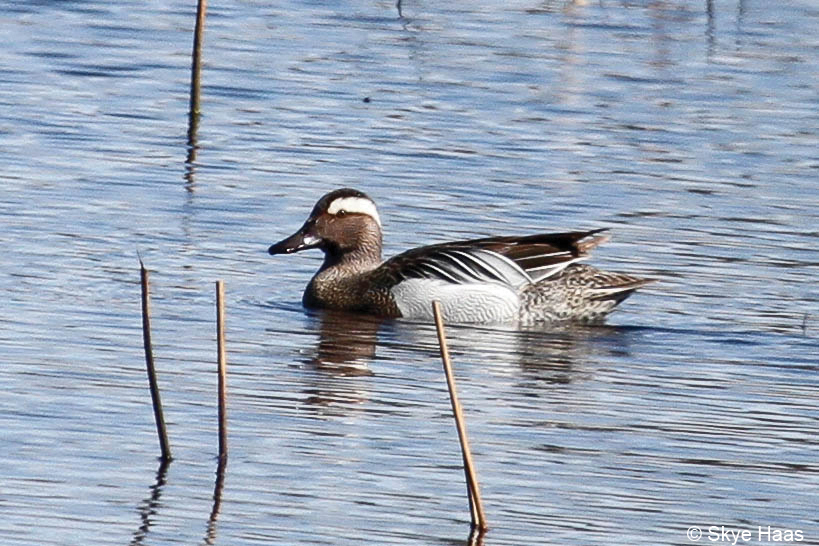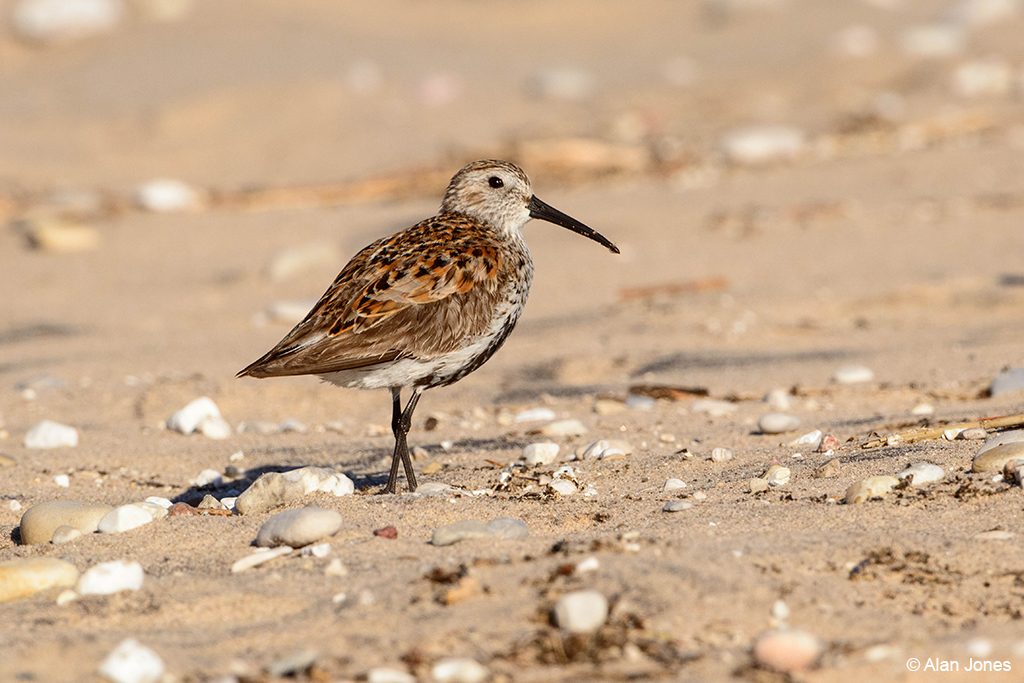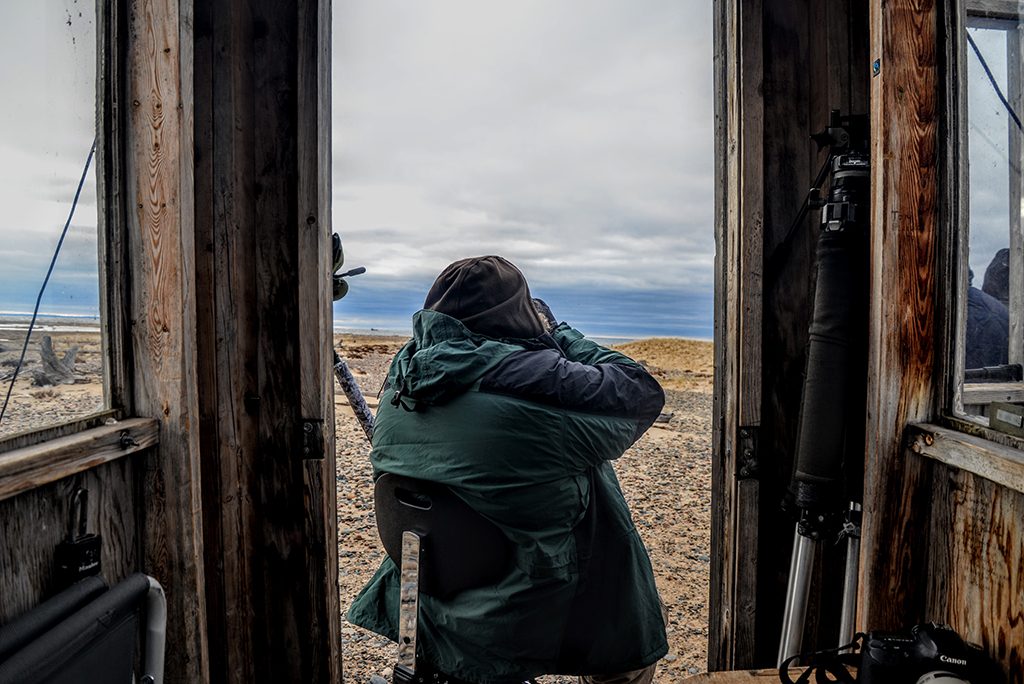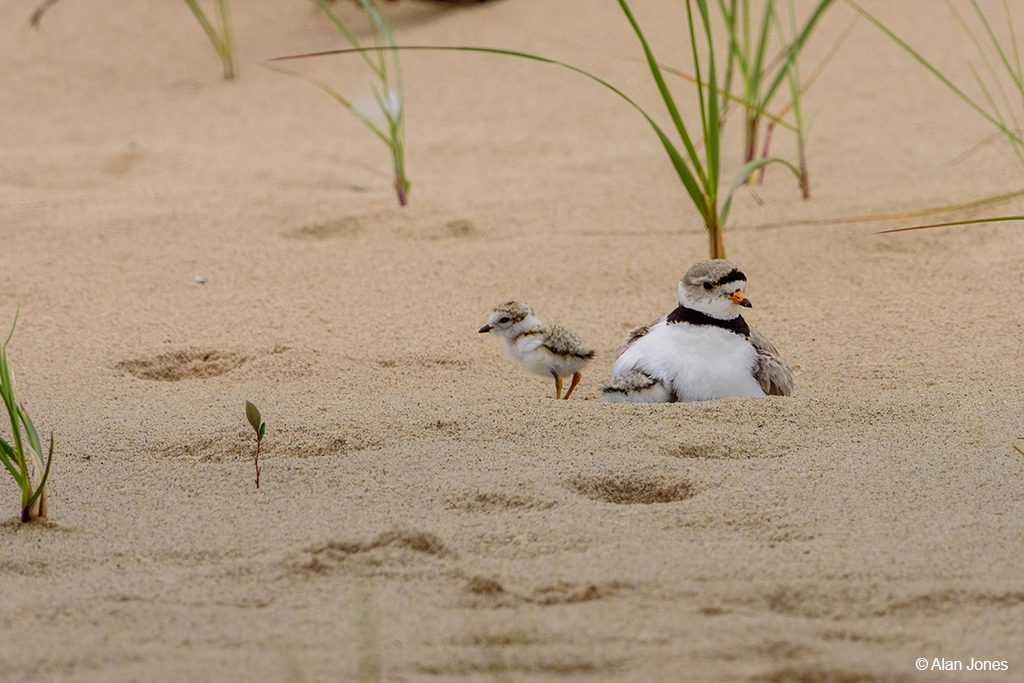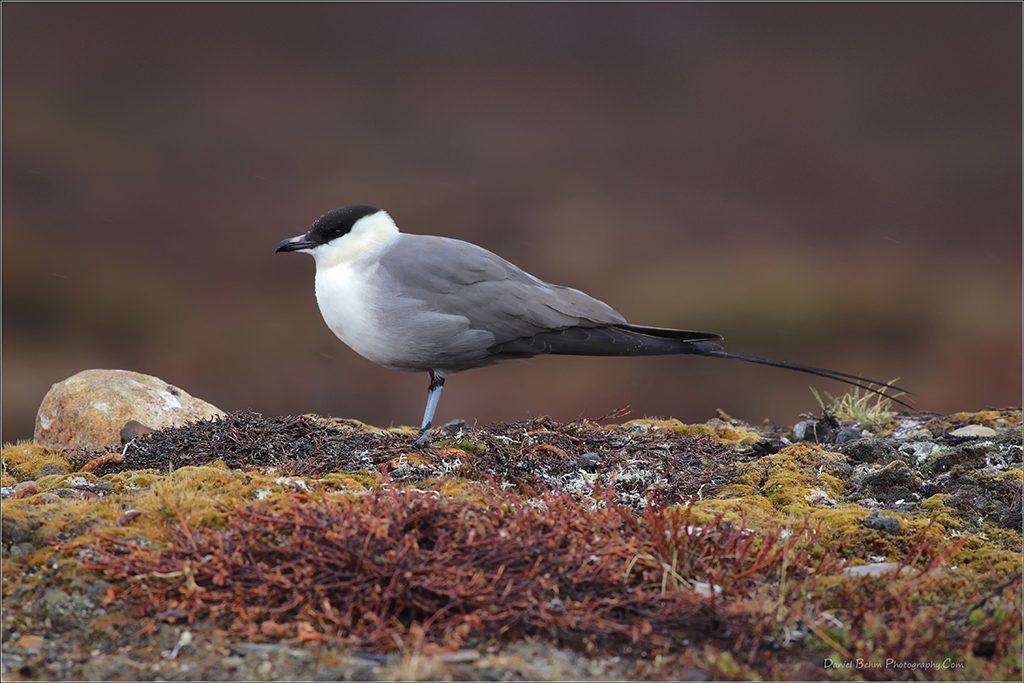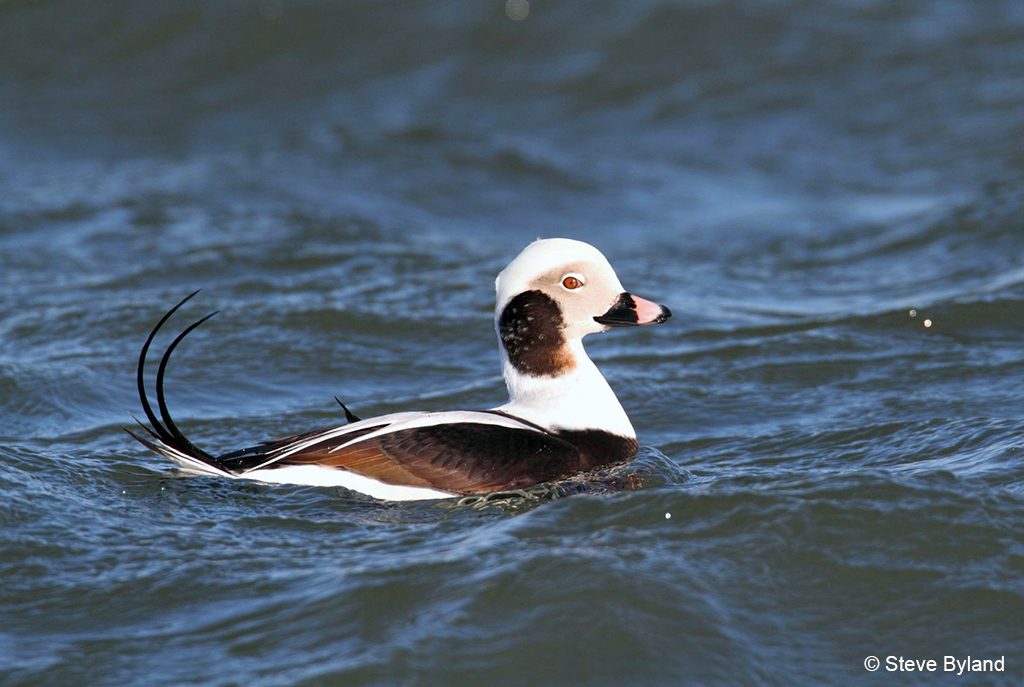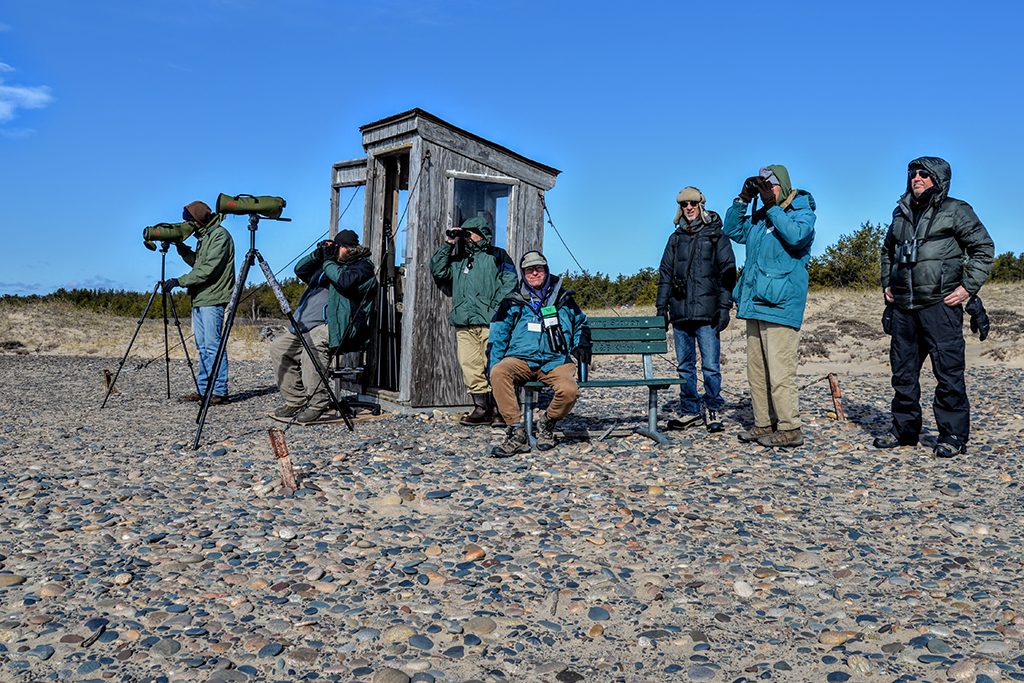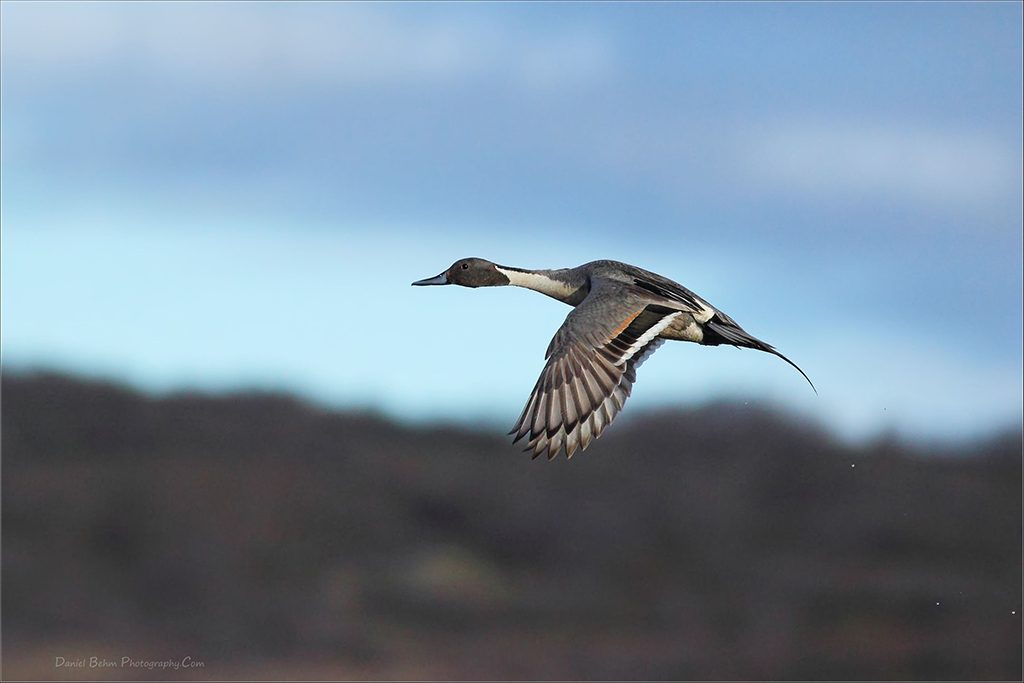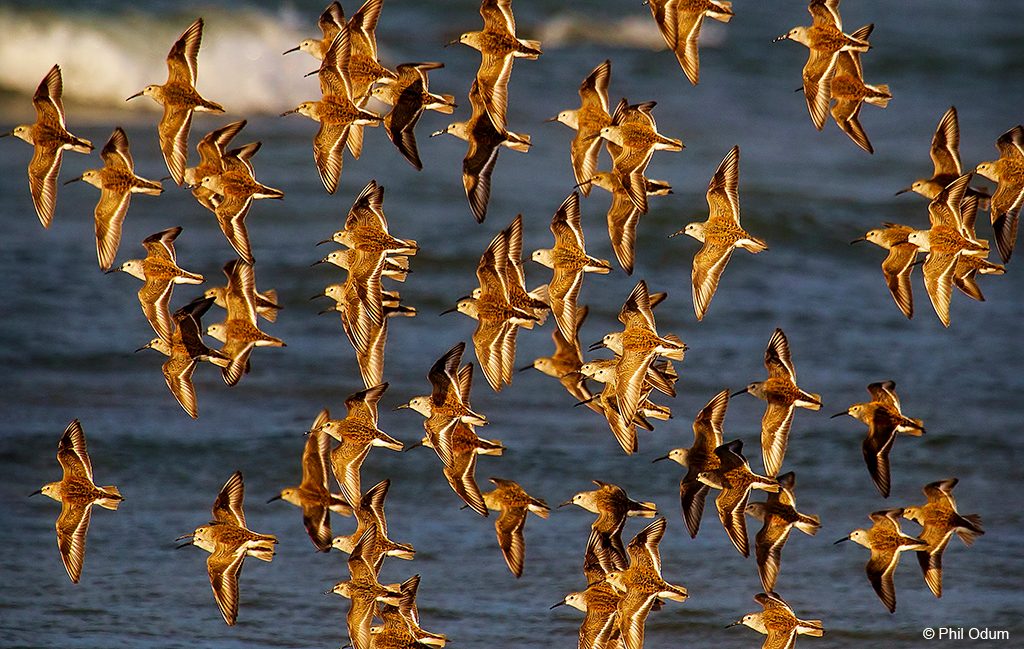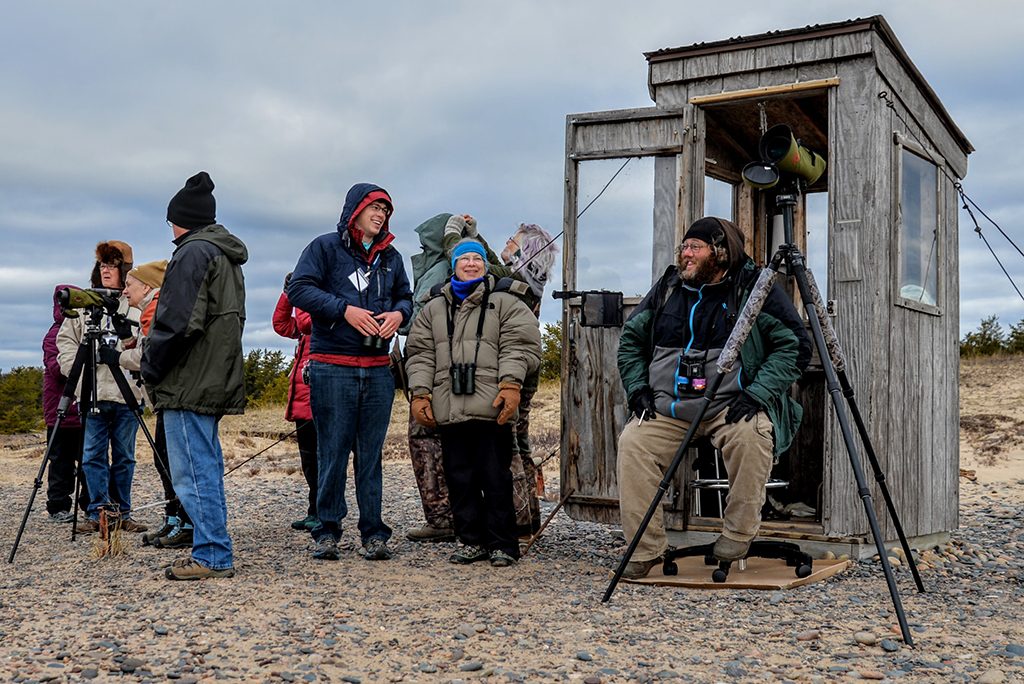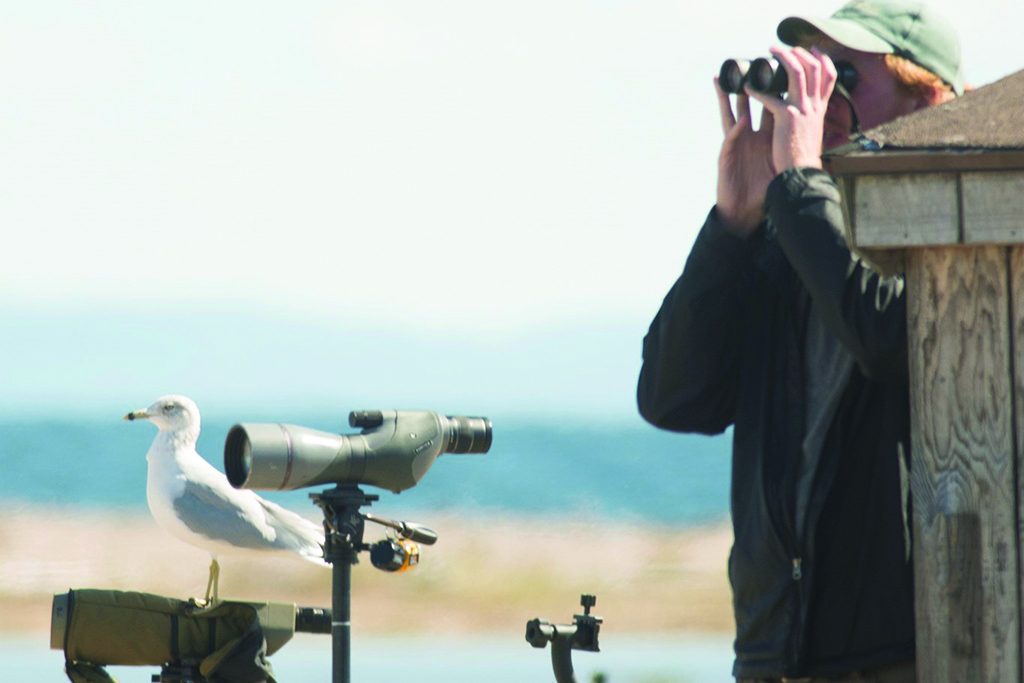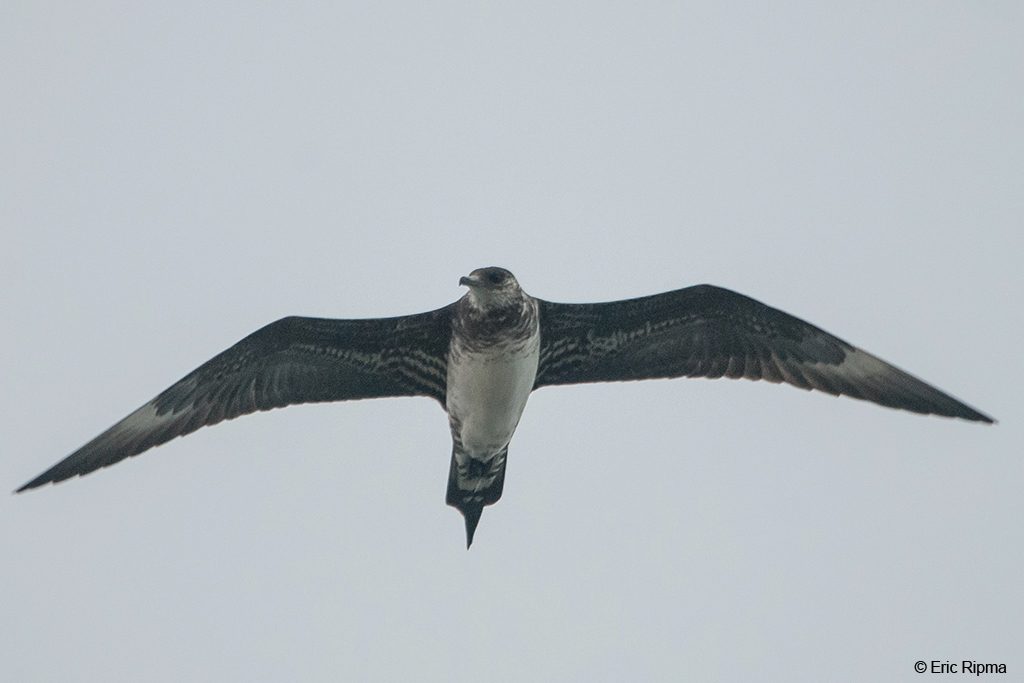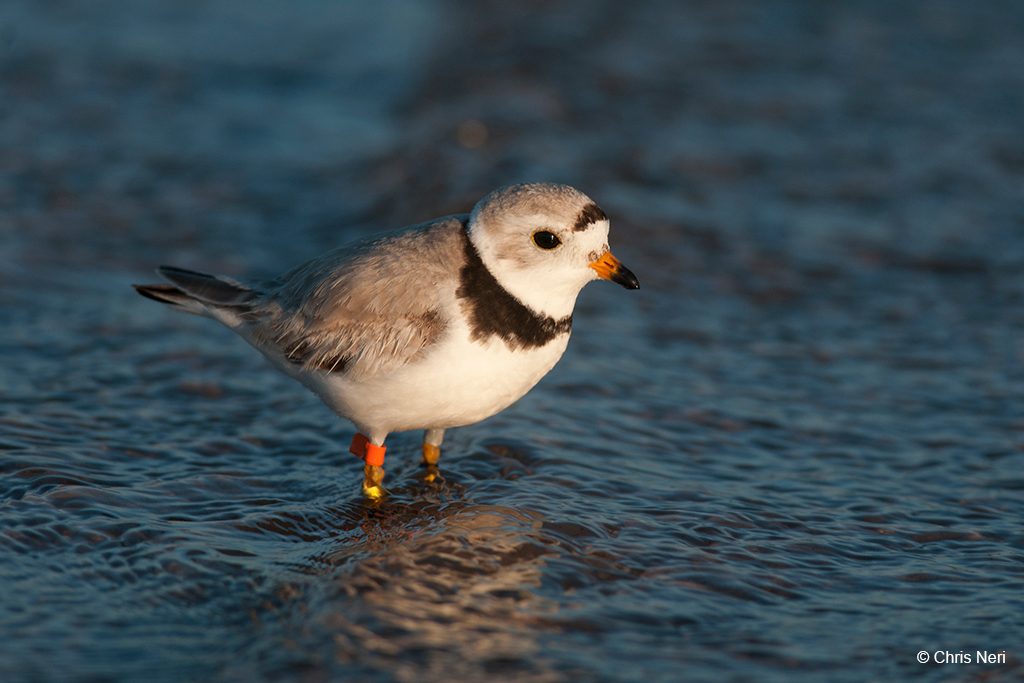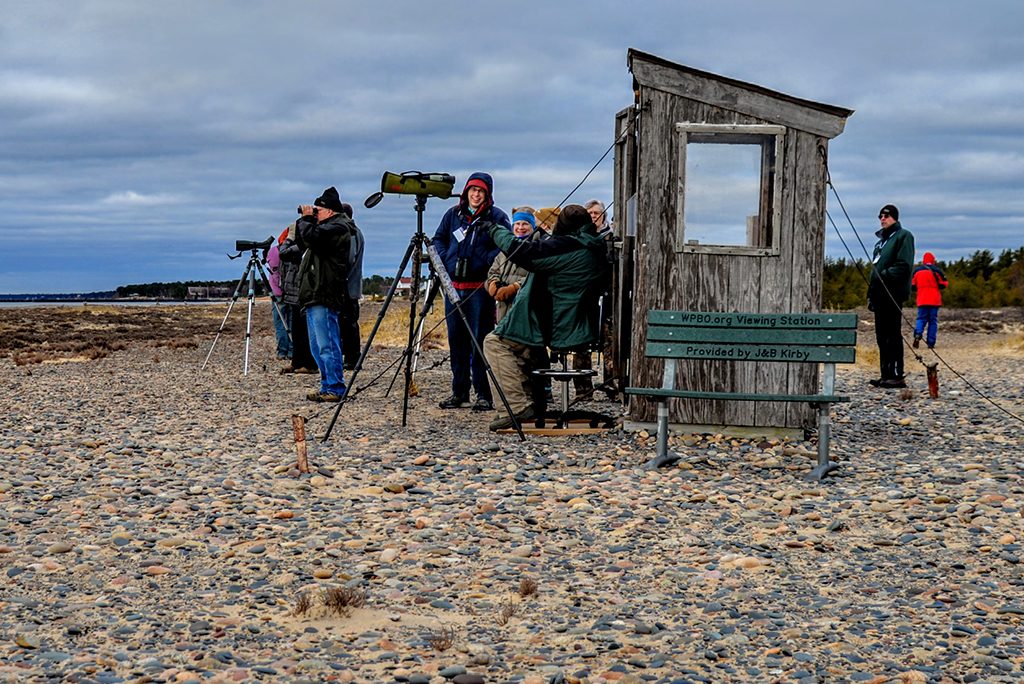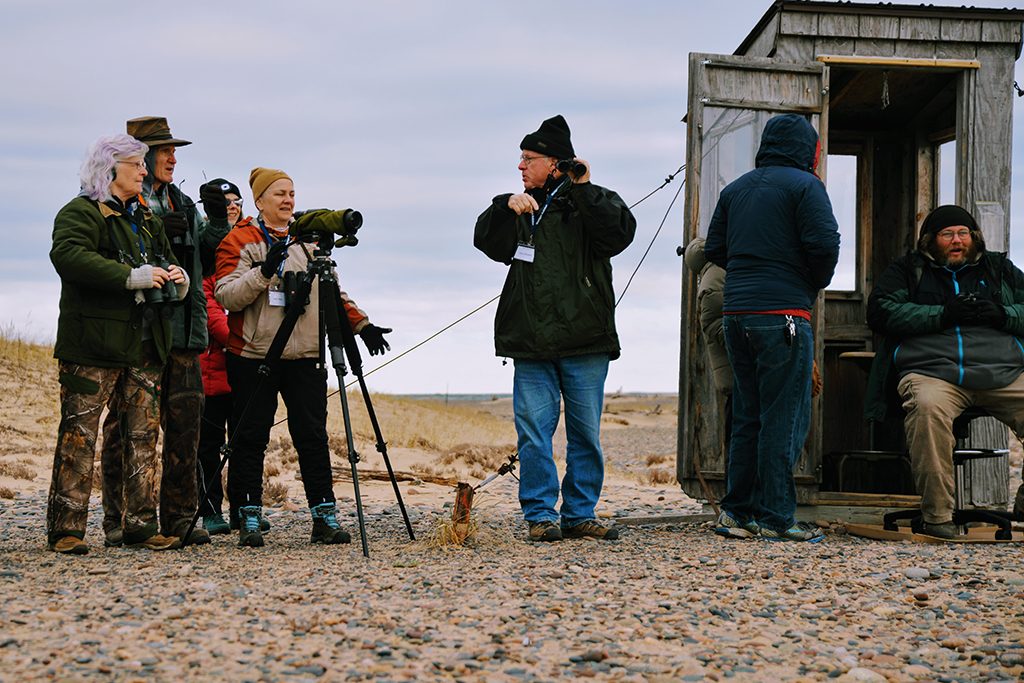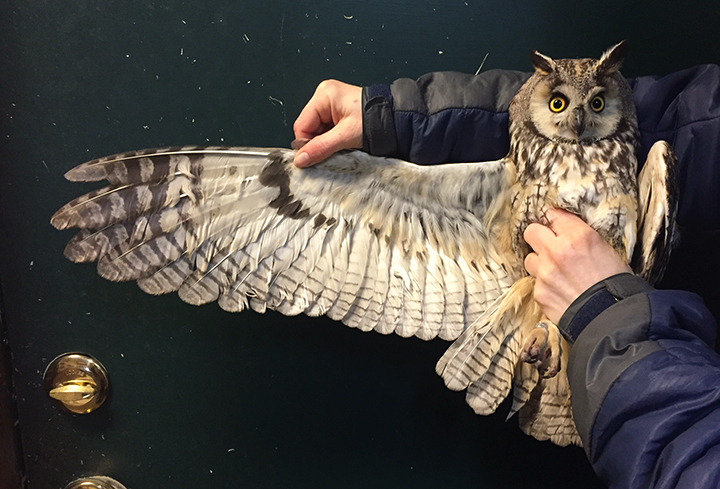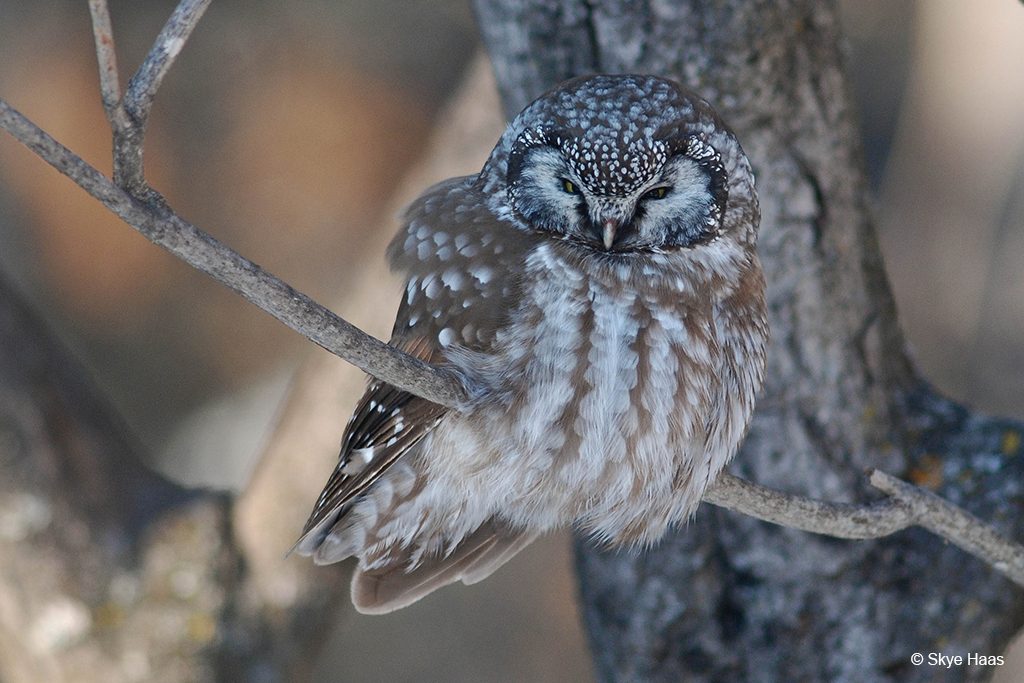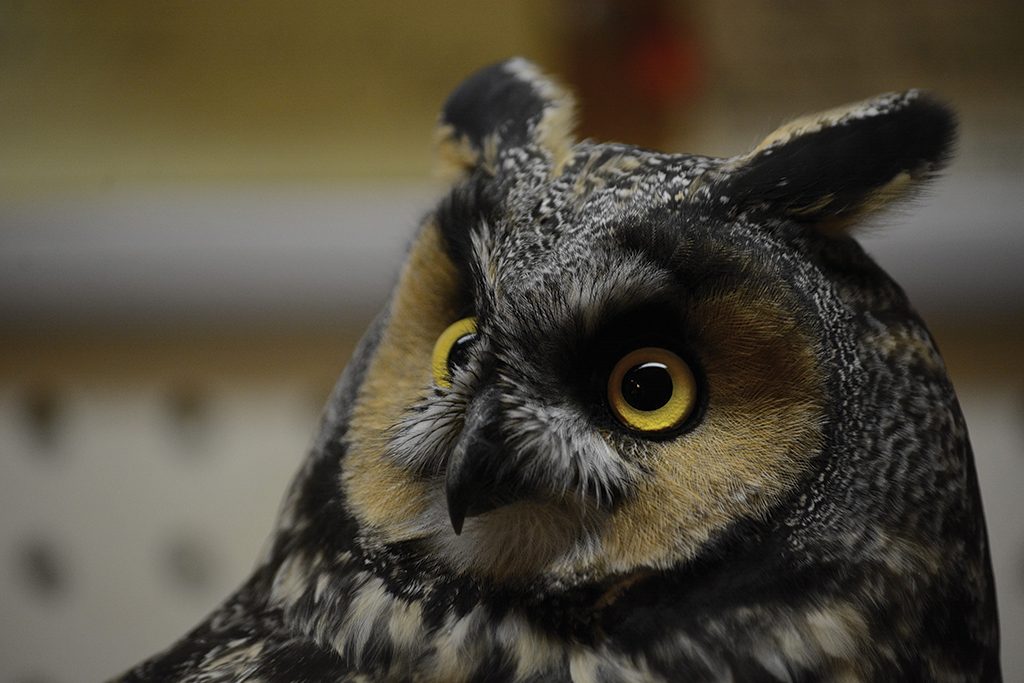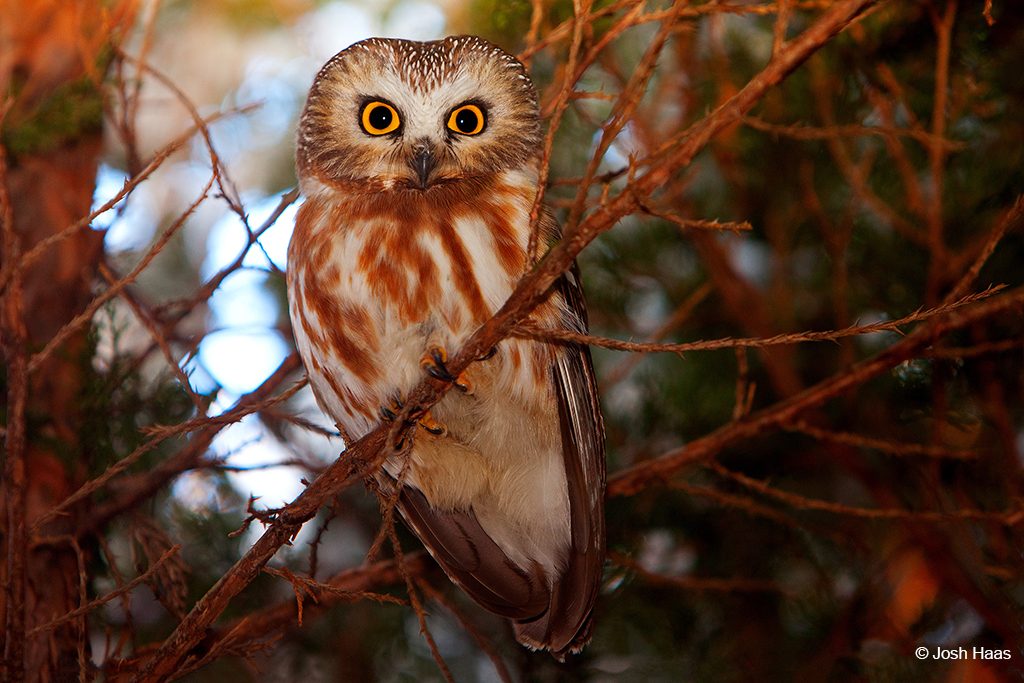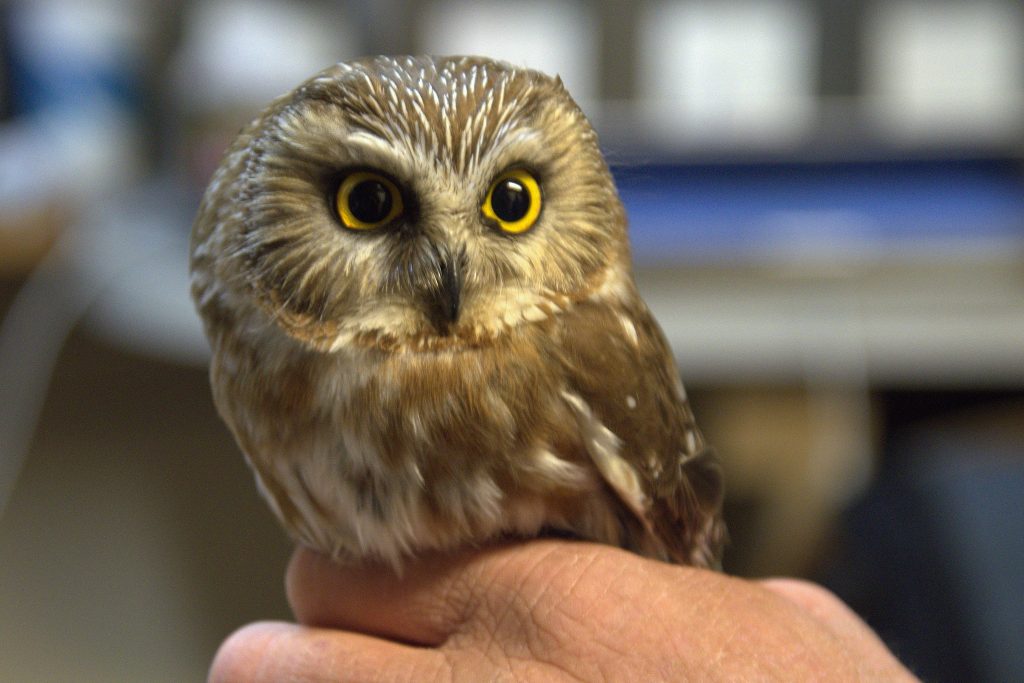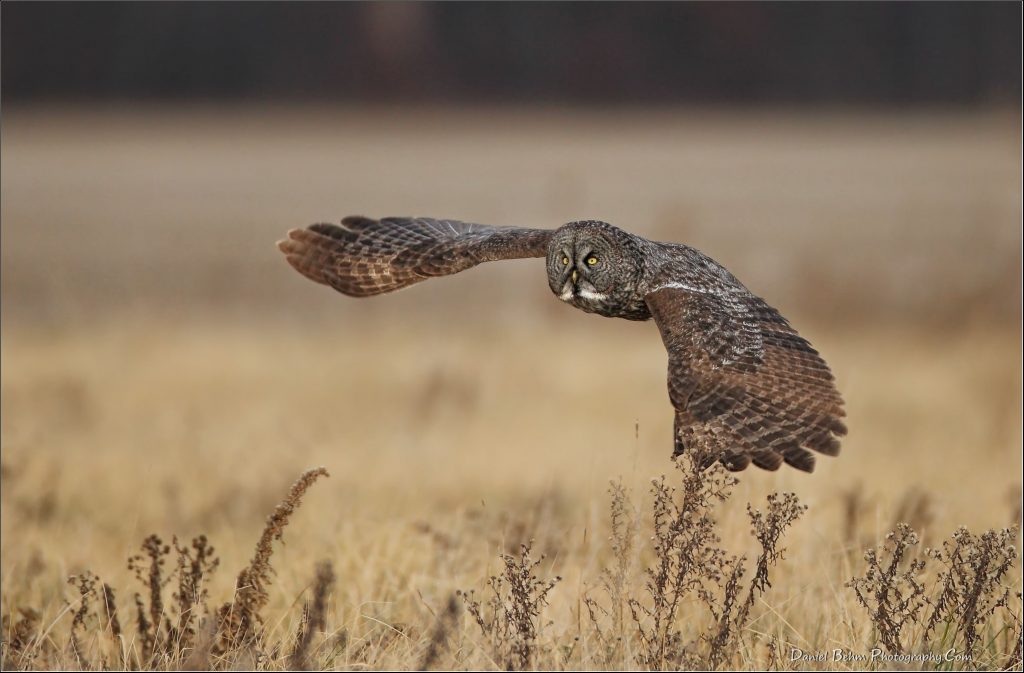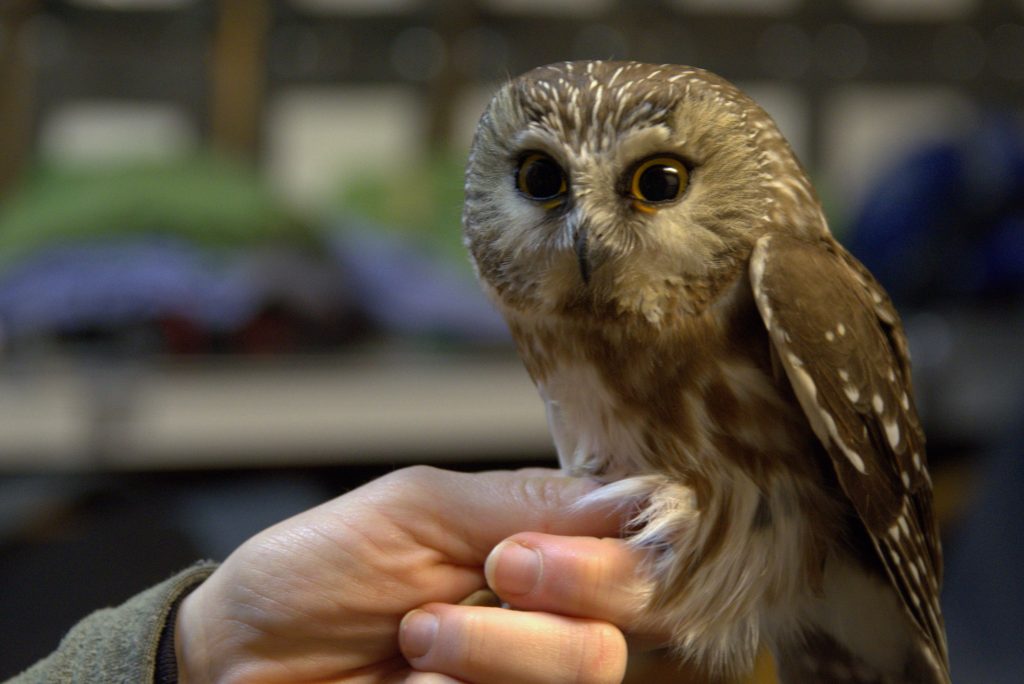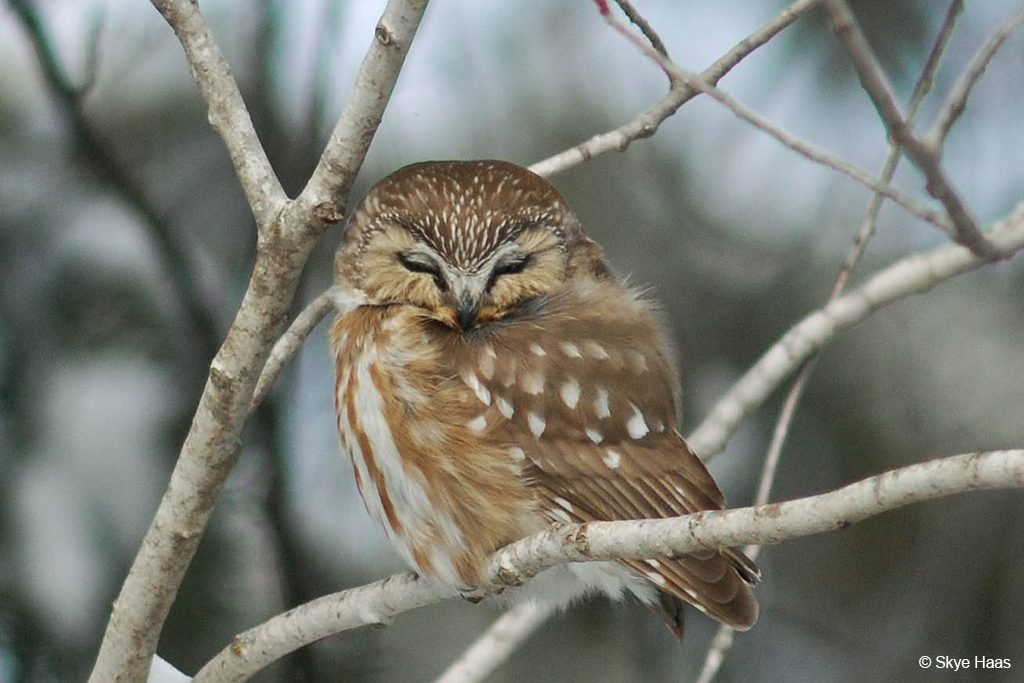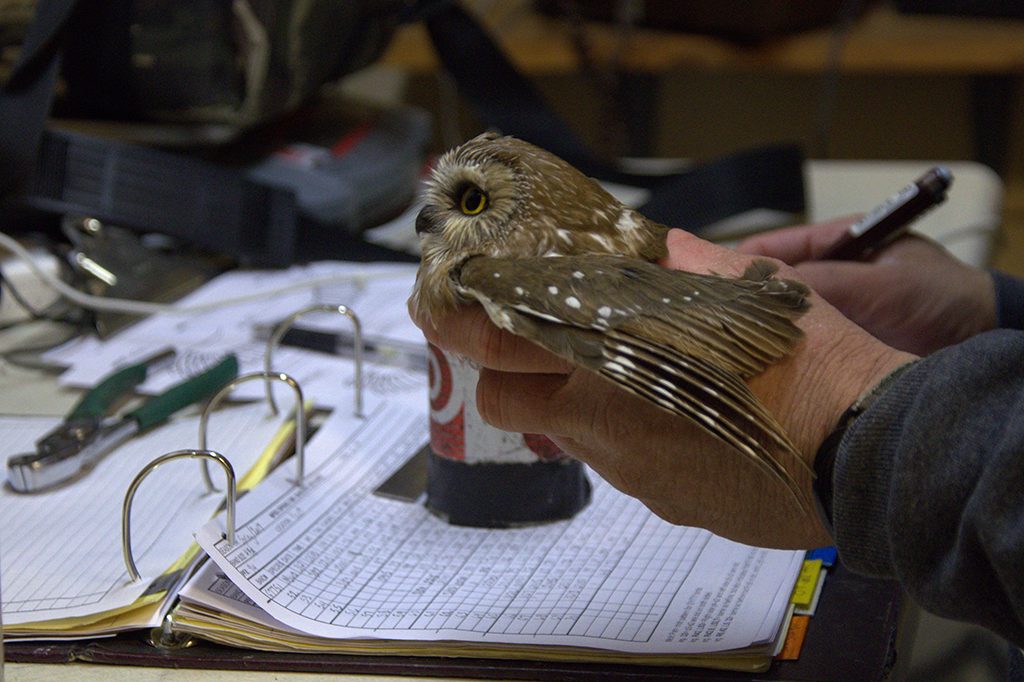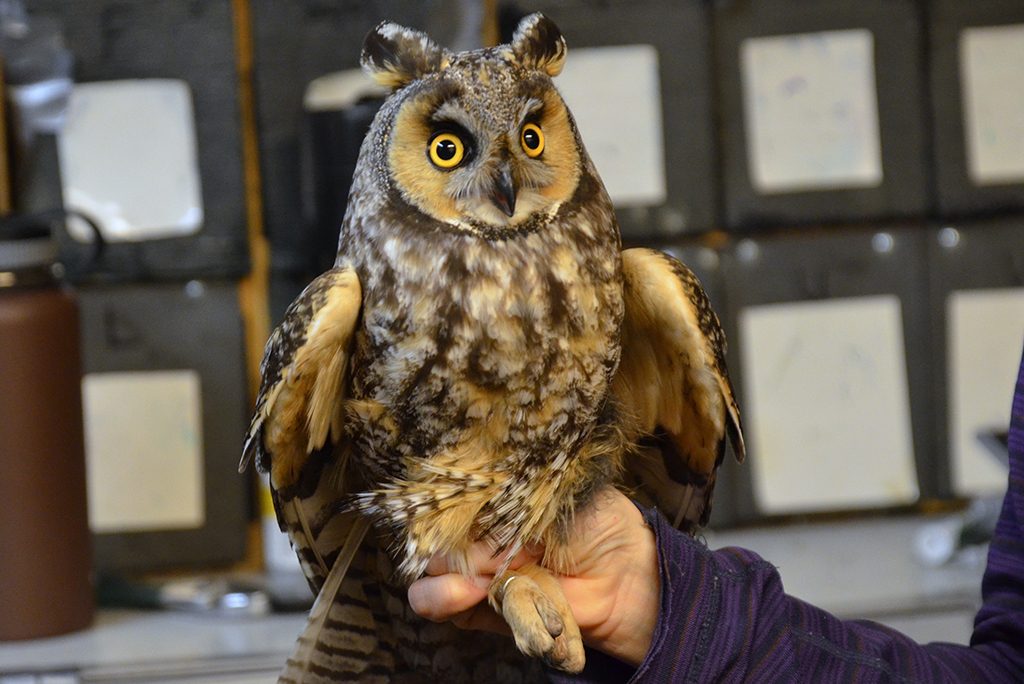Research at WPBO
Whitefish Point ranks among the most significant avian migration sites in North America. The Observatory’s long-term research programs are built around the vast biological opportunities of Whitefish Point and the northern Great Lakes ecosystem.
Annual Raptor Count
March 15 – May 31
Whitefish Point is one of the most important spring flight corridors for raptors in North America. The raptor count documents the migration of hawks, eagles, and falcons and provides reliable comparative data for long-term monitoring of raptor populations. This long-term census aims to determine the migration chronology of raptors at the Point and quantify the volume of migrants.
All observations are made from the Hawk Deck about 200 meters west of the Whitefish Point Lighthouse and about 20 meters above Lake Superior. For purposes of the count, migrating raptors are divided into two categories: passing species that actively migrate through the Point area and kettling species that congregate and linger at the Point. The WPBO raptor count has been actively gathering migration data for over 20 years. We are partnered with the Hawk Migration Association of America website, where you can view the numbers of hawks seen each day during migration.
Annual Waterbird Counts
April 15 – May 31 and August 15 – November 15
WPBO’s research aims to document avian migration at Whitefish Point. The Point is one of most important spots for documenting and monitoring waterbird movements in the upper Great Lakes. Spring and fall counts record loons, grebes, ducks, geese, shorebirds and other waterbirds, providing important information on abundance and timing of migration, aiding in regional and international efforts to monitor changes in bird populations.
The waterbird count is conducted from the beach near the tip of the Point. Counting waterbirds is rather straightforward compared to counting other birds, as waterbirds tend to migrate directly, and aside from a few exceptions, rarely linger. Most birds typically migrate from southeast to northwest in spring and the opposite direction in fall. Therefore, any birds seen migrating in the appropriate direction are counted. Individuals are not subtracted from the count if migrating in the wrong direction.
The goal of the census is to quantify the chronology and volume of migrating waterbirds in the Whitefish Point Migratory Corridor. Interpreting the waterbird data, like all bird censuses, must be done in the long term. Unlike the hawk count, in which weather can have a tremendous effect on the ability of the birds to reach the Point, visibility is the prime concern during waterbird counts. Some of the most inclement days have had some of the highest numbers of migrating waterbirds, but if it is foggy the ability to detect the passing migrants can be challenging.
Annual Owl Banding
March 15 – May 31, July 1 – August 25, and September 15 – October 31
Please Note: Owl Banding for 2025 is Currently Paused.
Owl banding at the Point takes place three times a year. Spring owl banding begins March 15 and runs through the end of May. Fall owl banding runs from September 15 to October 31. Summer owl banding, the most recent addition to the program, began in 2006 to specifically track post-fledgling Northern Saw-whet Owls. Summer banding runs from July 1 through August 25.
Owl banding efforts at WPBO, done in accordance with Federal and State permits, are both meaningful and unusual. After night capture with mist nets, our highly-trained and experienced staff works to gather information such as weight, tail, and wing measurements. Then they ring a numbered lightweight USFWS aluminum band around the bird’s ankle. This data helps to determine age, sex, and body condition of the bird. All data collected is sent to the National Bird Banding Lab in Maryland. This data, along with other data stored in the BBL repository, helps biologists and wildlife managers understand more about owl movements and demographics.
The aim of our research is to monitor owl populations over time in order to gain a better understanding of how these populations fluctuate and change over the years. As is common at owl banding sites across North America, most of the owls captured at WPBO are Northern Saw-Whet Owls. However, our efforts have documented a total of nine species of owls at the Point including Northern Saw-Whet, Boreal, Long-eared, Short-eared, Great Horned, Great Gray, Barred, Snowy and Northern Hawk Owls — an impressive diversity of owls that is largely unparalleled at any other banding site in North America. Also unique to WPBO, we are the only site to maintain a summer Northern Saw-Whet Owl banding program, which is providing unique insights into the demographics and movements of juvenile birds.
Owl Banding | Strategic Pause for Future Planning:
At this time, the owl banding program at Whitefish Point Bird Observatory remains paused. With the recent addition of a new Director of Research, we are carefully assessing how our scientific efforts can best contribute to conservation outcomes. Additionally, we are mindful of the presence of another research group conducting owl banding in the vicinity. To minimize stress on the birds, we have decided not to conduct our own banding activities at this time. While this group is not affiliated with Michigan Audubon or WPBO, we remain committed to best practices in avian research, ensuring that our work aligns with ethical standards and prioritizes bird welfare.
Keep checking back with us for future updates on our program.

